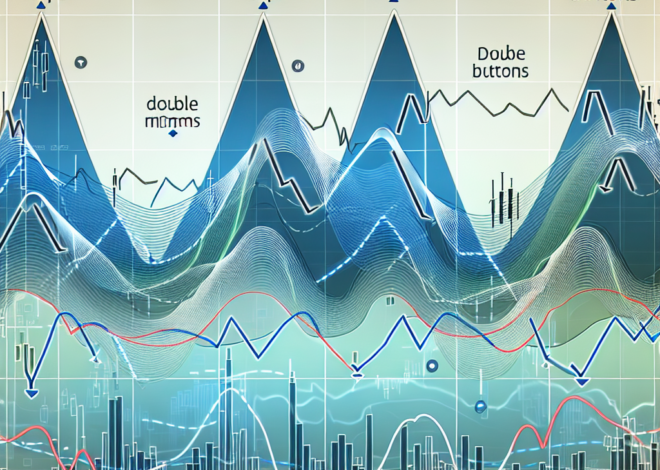Technical analysis
Mastering MACD Histogram for Effective Trading Insights
# Mastering MACD Histogram Interpretations The Moving Average Convergence Divergence (MACD) histogram is a powerful tool in technical analysis, offering deep insights into the momentum and potential reversal points of financial markets. Understanding its interpretations can significantly benefit traders and investors in making informed decisions. This article explores the primary aspects of the MACD histogram, […]
Mastering Double Tops and Bottoms in Trading
# Recognizing Double Tops and Bottoms Introduction to Double Tops and Bottoms In the world of technical analysis, chart patterns play a significant role in predicting future price movements. Among these patterns, double tops and double bottoms are particularly noteworthy for their reliability and the clear trading signals they provide. These patterns are formed after […]
Mastering Divergence in Trading Strategies
# Using Divergence in Trading Strategies Divergence is a potent tool in technical analysis that signals a possible reversal in the market trend. It occurs when the price of an asset moves in the opposite direction of a technical indicator, such as the Relative Strength Index (RSI), Moving Average Convergence Divergence (MACD), or momentum. This […]
Exploring Fibonacci Retracement in Trading
Understanding Fibonacci Retracement Fibonacci retracement is a popular tool used by traders to identify strategic levels for transactions, stop-loss orders, or target prices. The concept stems from the Fibonacci sequence, a series of numbers where each subsequent number is the sum of the two preceding ones. Fibonacci retracement levels are horizontal lines that indicate where […]
Mastering Cyclical Analysis for Effective Trading
Introduction to Cyclical Analysis in Trading Cyclical analysis is a powerful tool used by traders and investors to predict price movements by evaluating recurring patterns in the financial markets. This method assumes that historical market behaviors tend to repeat themselves over time due to economic cycles, investor sentiment, and external factors affecting supply and demand. […]
Mastering Oscillators for Effective Market Timing
Introduction to Oscillators in Market Timing Oscillators are a key tool in technical analysis employed by traders to predict future market movement by analyzing the price momentum and identifying conditions where an asset is considered overbought or oversold. Understanding how to effectively use oscillators can significantly enhance market timing strategies, making them invaluable for traders […]
Mastering Ichimoku Cloud Trading Signals
# Unveiling the Secrets of Ichimoku Cloud Trading Signals Understanding the complexities of the stock market requires not only intuition but also a deep knowledge of specific trading tools. Among these, the Ichimoku Cloud stands out as an all-encompassing indicator that offers traders a multifaceted view of the market. This article dives into the intricacies […]
Momentum Trading Strategies Using Oscillators
# Momentum Trading with Oscillators Momentum trading is a technique in financial markets that involves buying securities that have been performing well and selling those that have been performing poorly, based on the assumption that securities that have moved strongly in one direction will continue to move in that direction. This strategy relies heavily on […]
Mastering Volume Spikes and Market Reversals in Trading
Understanding Volume Spikes and Market Reversals Volume spikes and market reversals are two critical concepts that every trader should be familiar with. Together, they can provide insightful indicators about the stock market’s future movements. By understanding these phenomena, traders can enhance their trading strategies, mitigating risks and maximizing potential returns. This article will explore the […]
Mastering RSI Strategies for Effective Market Analysis
Introduction to RSI and Its Importance in Market Analysis The Relative Strength Index (RSI) is a momentum oscillator that measures the speed and change of price movements. Created by J. Welles Wilder Jr. in 1978, RSI oscillates between zero and 100 and is considered overbought when above 70 and oversold when below 30. This tool […]









